Forget Yellowstone. Skip the Everglades.
If you’re chasing birds, Acadia is where the magic happens.
Tucked along Maine’s rugged coast, this park doesn’t shout.
It whispers.
But oh, what it whispers—warblers, eiders, hawks, owls, and more.
Each flap of a wing could lead you to something rare, colorful, or downright majestic.
You won’t need binoculars glued to your face for long.
These birds want to be seen.
From rocky shores to forested peaks, Acadia rolls out the red carpet for feathered royalty.
Ready to meet 22 stars of the sky who turn this quiet park into a birdwatcher’s dream?
Grab your boots, pack a snack, and keep your eyes up.
They’re waiting.
Peregrine Falcon
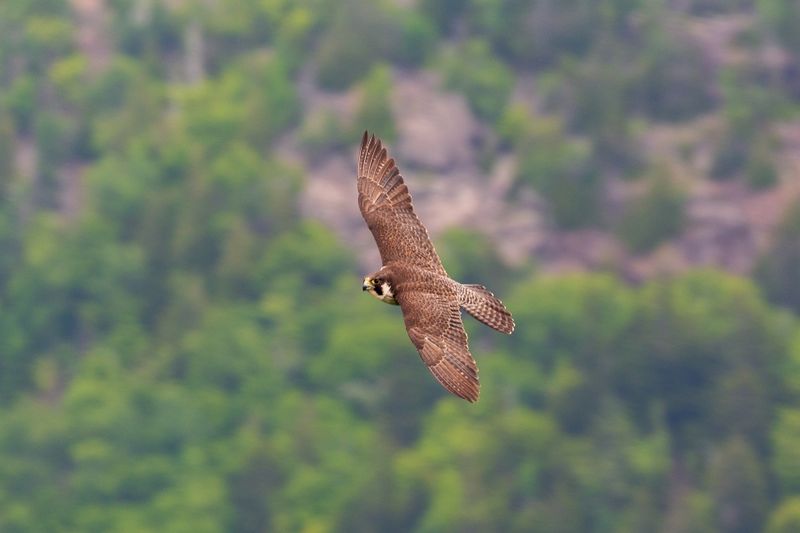
Imagine standing on the cliffs of Acadia, watching a Peregrine Falcon dive toward its prey at a breathtaking speed. Revered for its agility, this bird is the fastest in the world, reaching speeds over 240 mph. Its sharp talons and keen eyesight make it a formidable hunter.
The falcon’s call echoes through the park, a sound that resonates with power and grace. Found perched on rocky ledges, it commands the skies with authority.
Did you know? Peregrine Falcons were once endangered, but conservation efforts have helped their populations rebound significantly.
Common Loon
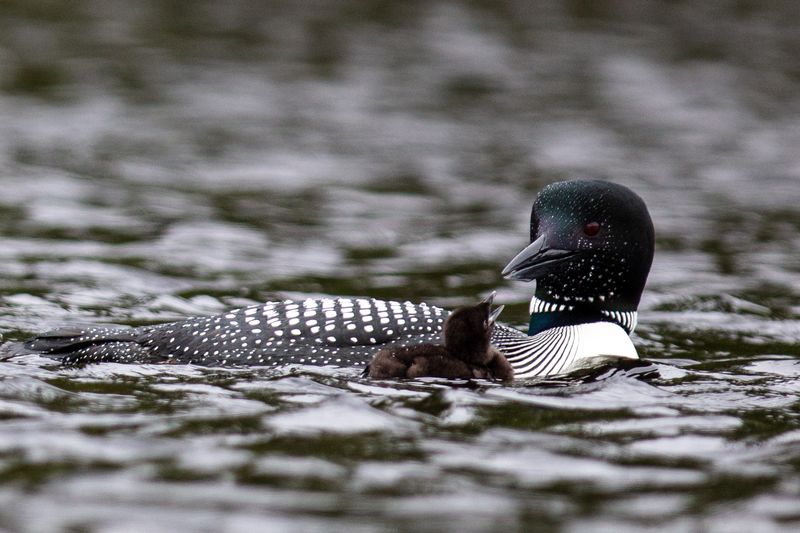
The haunting call of the Common Loon is synonymous with the wilderness of Acadia. This bird’s eerie yodel can send shivers down the spine of any listener. Its striking black-and-white plumage is a sight to behold as it glides gracefully across the park’s pristine lakes.
In the summer, the loon’s crimson eyes and sleek head make it easily recognizable. Known for its diving prowess, it can plunge underwater in search of fish.
Fun fact: Loons are excellent swimmers but are awkward on land due to their rear-positioned legs.
Black-capped Chickadee
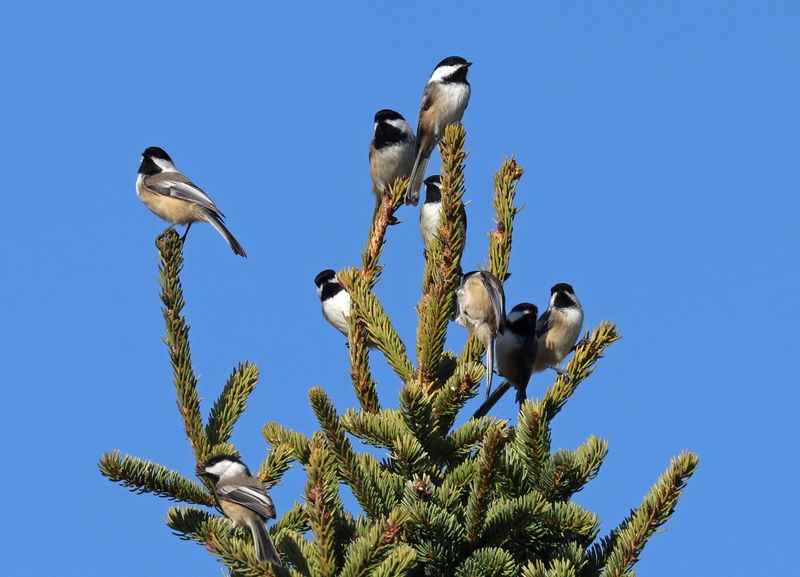
With an endearing curiosity, the Black-capped Chickadee is a joyful presence in Acadia. Its cheerful ‘chick-a-dee-dee-dee’ call is a familiar sound as it flits from branch to branch.
Despite its tiny size, this bird exudes a bold personality, often approaching hikers out of sheer inquisitiveness. Their remarkable ability to remember food storage locations showcases their intelligence.
In winter, chickadees add to the park’s charm, braving the cold with fluffier feathers and spirited calls, making them an integral part of Acadia’s winter landscape.
Bald Eagle
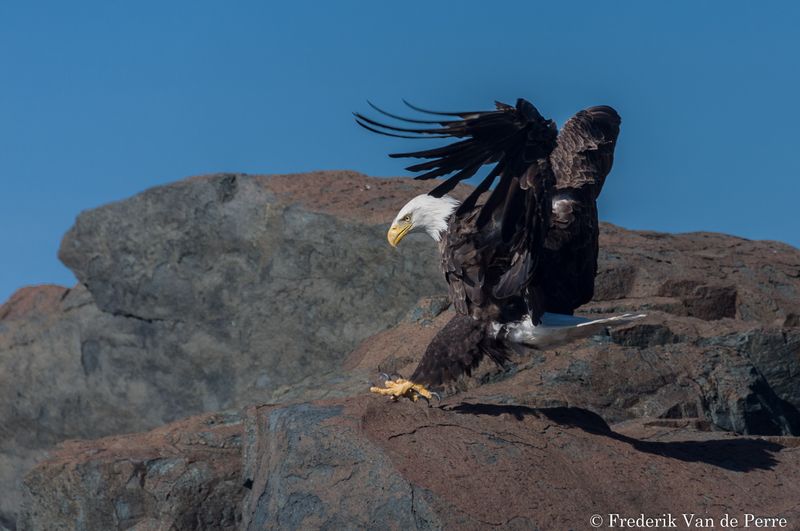
The imposing Bald Eagle, a symbol of strength and freedom, reigns supreme over Acadia’s skies. Observing its grand wingspan as it glides effortlessly is a sight that leaves spectators in awe.
Their piercing eyes scan the water for fish, their primary diet, showcasing their expert hunting skills. Nestled atop towering trees, their nests are equally impressive in size.
Conservation efforts have seen the Bald Eagle’s population thrive, restoring this avian icon to American landscapes, including the majestic vistas of Acadia National Park.
American Goldfinch
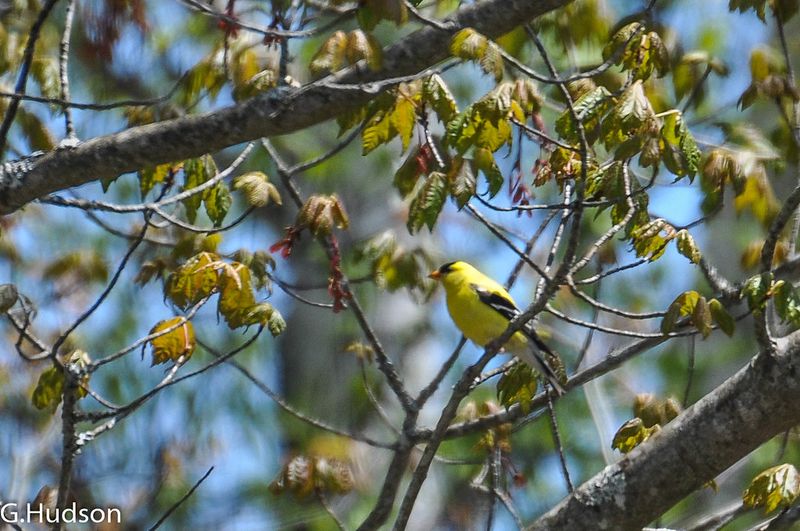
A splash of sunshine, the American Goldfinch brings vibrancy to Acadia with its radiant yellow feathers. These delightful birds are often seen flitting among meadows, their cheerful song resonating through the air.
In the summer, their bright plumage is unmistakable, while in winter, they don a subtler, olive-brown look. Known for their acrobatic flight, goldfinches are a joy to watch as they deftly maneuver through the park.
Their diet predominantly consists of seeds, particularly favoring thistle, which complements their playful nature and sunny disposition.
Northern Cardinal
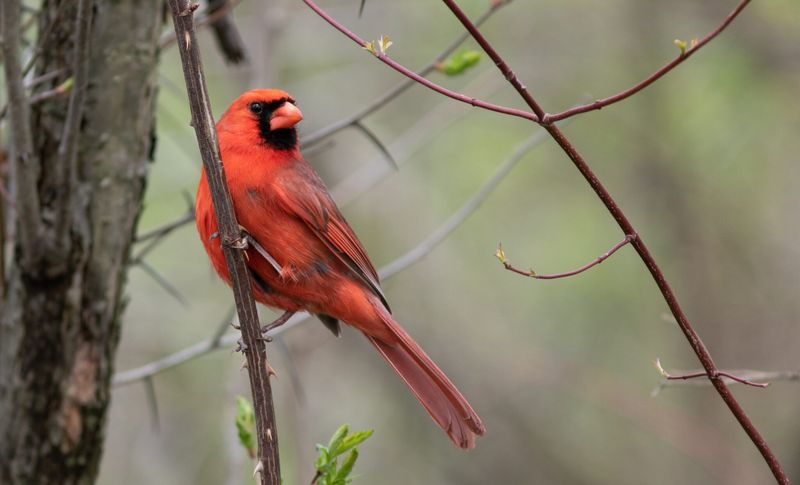
The Northern Cardinal, with its vivid red plumage, is an unmistakable visitor in Acadia. Its melodic song, a series of whistles, adds a musical backdrop to the park’s tranquil settings.
Males boast a brilliant red, while females are elegantly brown with hints of red, both striking in their own right. Cardinals are known for their loyalty, often seen in pairs as they forage for seeds and fruit.
Fun fact: Cardinals are monogamous, and their cheerful presence is a symbol of hope and vitality in the heart of Acadia.
Eastern Bluebird
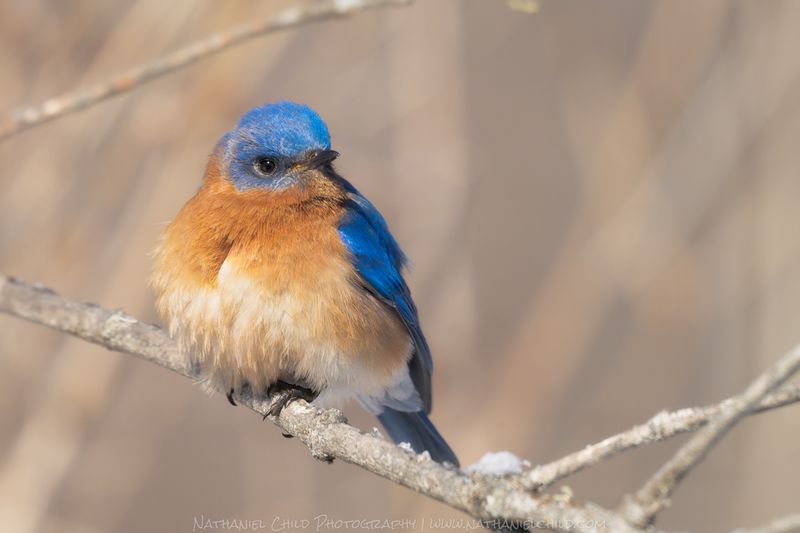
A flurry of blue and rust, the Eastern Bluebird adds a splash of color to the natural palette of Acadia. Their sweet, warbling song can uplift any passerby’s spirits.
These social birds are often found in open fields, where they nest in cavities or man-made boxes, making them easy to spot. Their diet of insects and berries makes them valuable allies for maintaining the park’s ecological balance.
Eastern Bluebirds are a testament to successful conservation, thriving across their range due to human intervention with nest box programs.
Barred Owl
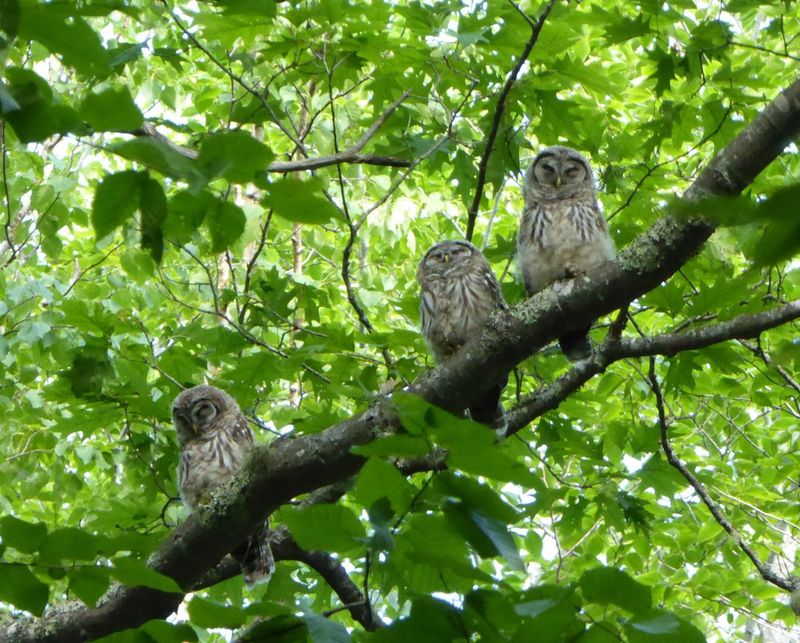
In the quiet of Acadia’s night, the haunting call of the Barred Owl, asking ‘Who cooks for you?’ is unforgettable. This owl’s distinctive appearance, with its round face and dark eyes, is captivating.
Hunting mostly at night, they use their silent flight to surprise prey, primarily small mammals. Their adaptability to various habitats makes them a common presence in the park’s woodlands.
Barred Owls are known for their strong family bonds, often seen with their young, adding a sense of mystery and wonder to Acadia’s nocturnal landscape.
Scarlet Tanager
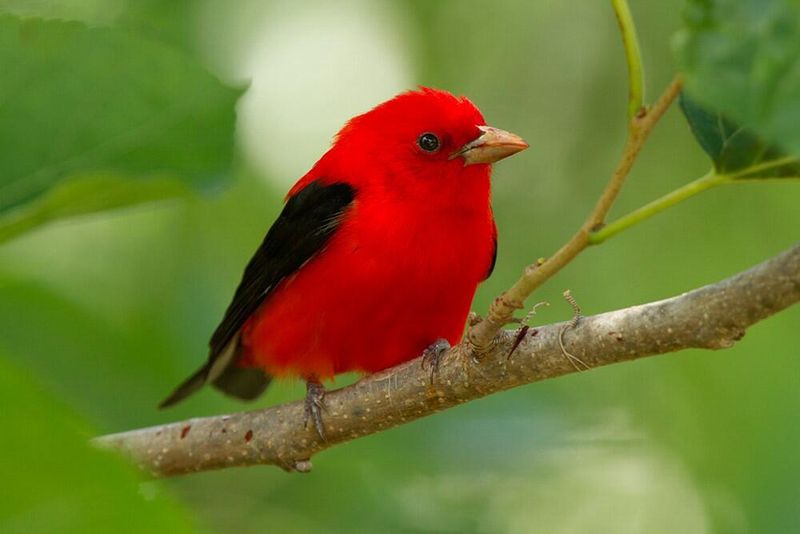
The Scarlet Tanager, a bold splash of red, is a hidden treasure among Acadia’s treetops. During spring and summer, the males are a sight to behold, their fiery red contrasting with black wings.
These elusive birds prefer the high canopy, making them a challenge to spot, yet rewarding for those who do. Their diet consists of insects and fruit, playing a crucial role in seed dispersal.
Come fall, the males molt into olive-yellow, showcasing nature’s seasonal artistry within the park’s vibrant ecosystem.
Great Blue Heron
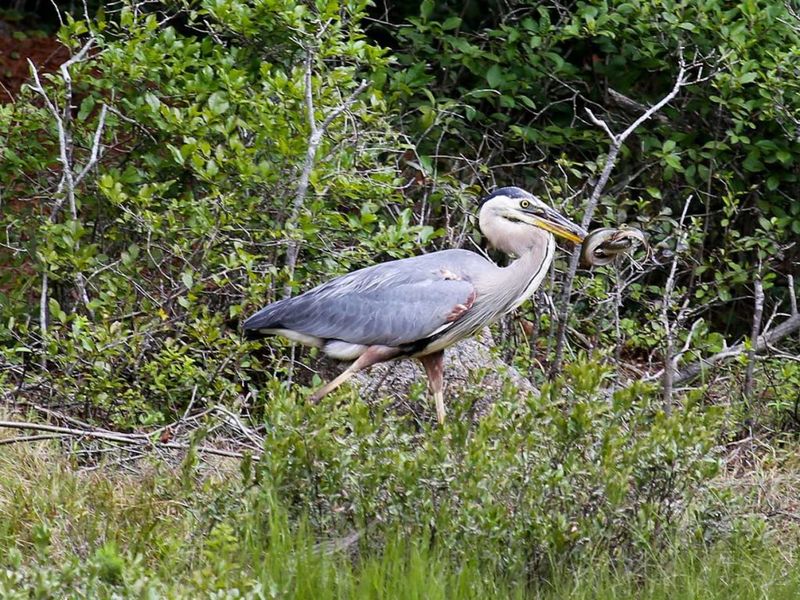
A symbol of elegance, the Great Blue Heron is a master of patience and poise. Wading through Acadia’s wetlands, this heron stands tall, its silhouette striking against the water’s surface.
With a slow, deliberate movement, it hunts fish and amphibians, its sharp beak a deadly tool. These birds are often solitary, yet their presence is commanding and serene.
Great Blue Herons nest in colonies high in trees, their rookery a bustling world ensuring the continuity of their majestic lineage.
Ruby-throated Hummingbird
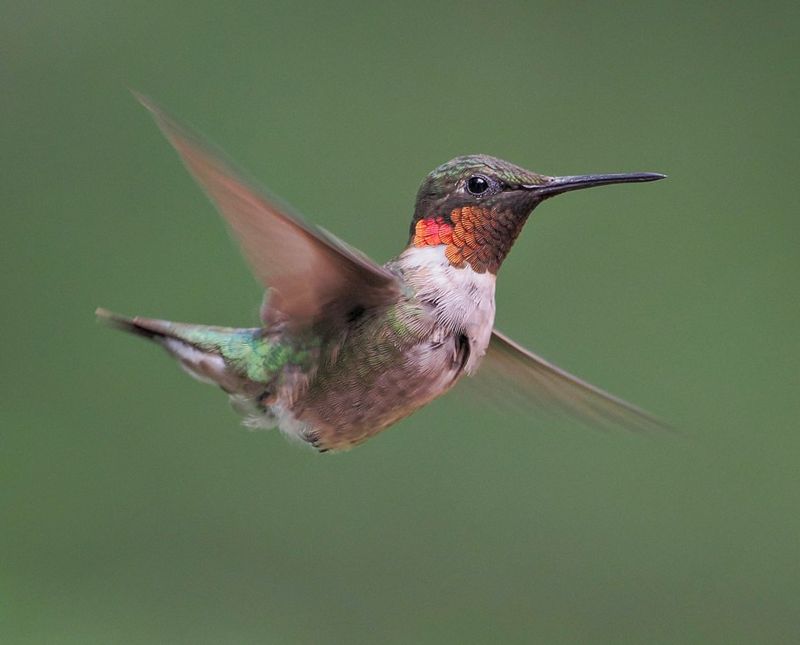
A jewel in flight, the Ruby-throated Hummingbird dazzles with its shimmering throat and agile maneuvers. This tiny bird is a marvel to witness in Acadia, darting between flowers with incredible speed.
Hovering in place, its wings beat rapidly, creating a distinctive hum. These energetic birds are vital pollinators, sipping nectar and supporting the park’s floral diversity.
During migration, they embark on an extraordinary journey, crossing the Gulf of Mexico in a single flight, showcasing their remarkable endurance and resilience.
Pileated Woodpecker

The resonating drumming of the Pileated Woodpecker echoes through Acadia’s forests. This large, charismatic bird is hard to miss, with its striking red crest and powerful presence.
Renowned for creating large rectangular holes in trees, these excavators play a crucial role in forest ecology, providing habitats for other species.
Their call, a loud, laugh-like series of notes, adds character to the park’s soundscape, making them a beloved subject among birdwatchers visiting this natural haven.
Osprey
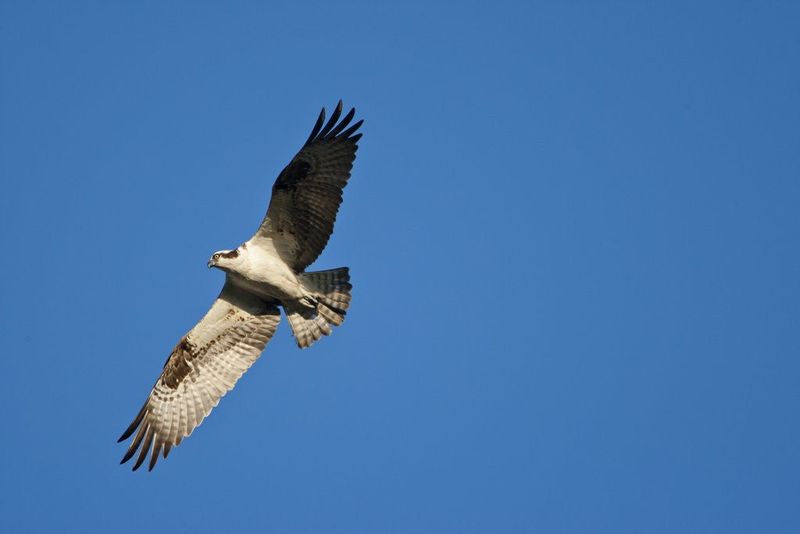
The Osprey, often seen soaring above Acadia’s lakes, is a master fisherman. With sharp talons and keen eyesight, it dives into the water with precision to catch its prey.
These birds are known for their striking appearance, with dark masks across their eyes and contrasting white undersides. Often nesting on high platforms, their nests are a familiar sight against the skyline.
Ospreys are a success story, their populations rebounding due to conservation efforts, symbolizing resilience and the thriving wildlife of Acadia.
Song Sparrow

The Song Sparrow, a modest bird with a powerful voice, fills Acadia with its melodious tunes. Its song, a mix of trills and notes, is a staple of the park’s soundscape, providing a sweet serenade to visitors.
These adaptable birds are found in a variety of habitats, from shrublands to marshes, where they forage for seeds and insects.
Their plumage, a mix of browns and streaks, may seem understated, but their vocal prowess and hardy nature make them a cherished presence in the park.
Red-winged Blackbird

The Red-winged Blackbird, with its distinctive call and striking appearance, adds drama to Acadia’s wetlands. Males, with their black bodies and fiery shoulder patches, are often seen perched on reeds, calling out with a characteristic ‘conk-la-ree.’
These social birds are commonly found in marshy areas, where they nest and feed on insects and seeds. Their presence is a vivid reminder of the park’s rich avian diversity.
During the breeding season, their territorial displays and vocalizations are a spectacle to observe.
American Robin
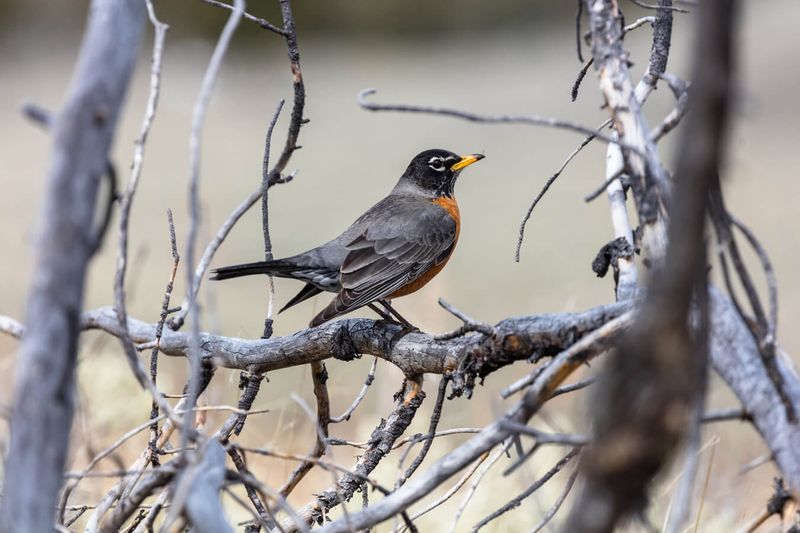
The American Robin, a harbinger of spring, graces Acadia with its cheerful presence. Known for its orange breast and melodic song, this bird is a familiar favorite among visitors.
Robins are often seen foraging on the ground, their heads cocked as they listen for worms and insects. Their nests, made of mud and grass, can be spotted tucked into tree branches.
Their widespread presence and adaptability make them a symbol of resilience and renewal, echoing the seasonal changes within the park.
Northern Flicker
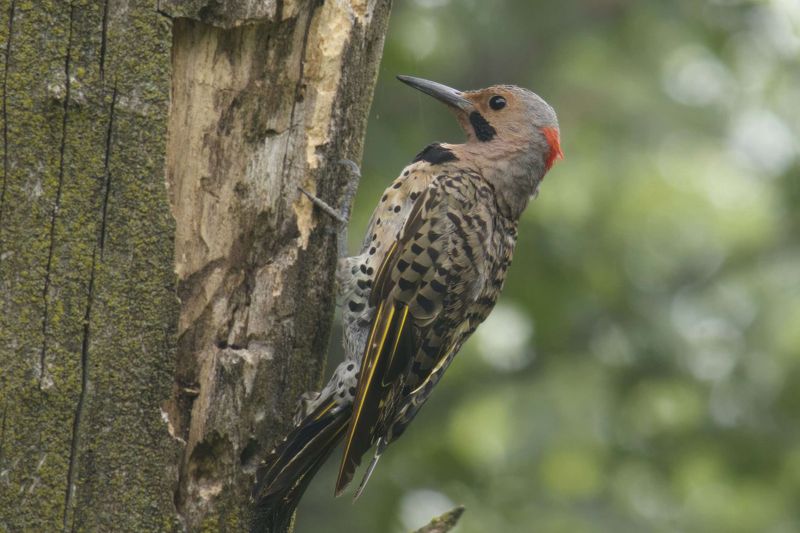
The Northern Flicker, a unique member of the woodpecker family, is often seen foraging on the ground in Acadia. With its spotted plumage and bright yellow underwings, this bird is a striking sight.
Known for its distinctive call and rhythmic drumming, the flicker adds an auditory charm to the park’s forests. They feed primarily on ants and insects, using their long tongues to extract prey from the ground.
Their presence is a testament to the rich biodiversity and dynamic ecosystems found within the park.
Black-throated Green Warbler
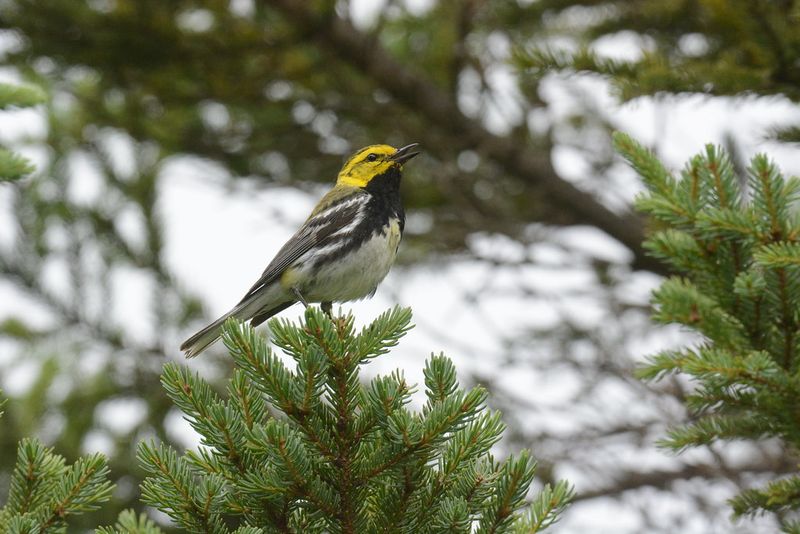
The Black-throated Green Warbler, a vibrant little bird, adds a splash of color to Acadia’s forests. Its sweet song, a series of ‘zee-zee-zee-zoo-zeet,’ is a delightful presence during spring and summer.
These warblers are often seen flitting among the branches, searching for insects and spiders. Their olive-green and yellow plumage is striking, and the black throat is a distinctive feature.
As a migratory bird, it travels vast distances, embodying the dynamic and interconnected nature of the park’s avian life.
Cedar Waxwing
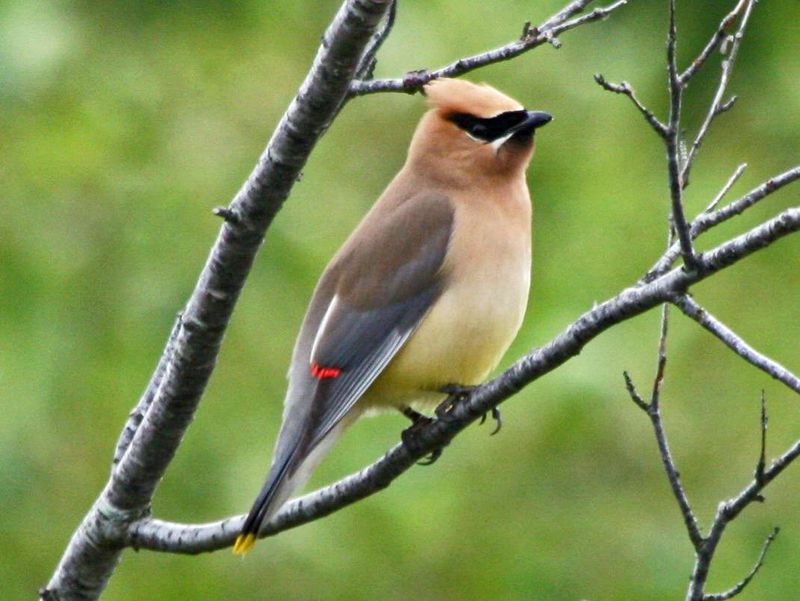
Elegant and social, the Cedar Waxwing is often seen in flocks, gracing Acadia with its sleek appearance. Their soft, high-pitched calls create a serene atmosphere as they move through berry-laden trees.
With a silky brown body and striking black mask, these birds are a visual treat. They play a significant role in seed dispersal, their diet rich in fruits.
Their cohesive group behavior and distinctive waxy red wing tips make them a fascinating study for bird enthusiasts visiting the park.
Yellow-rumped Warbler
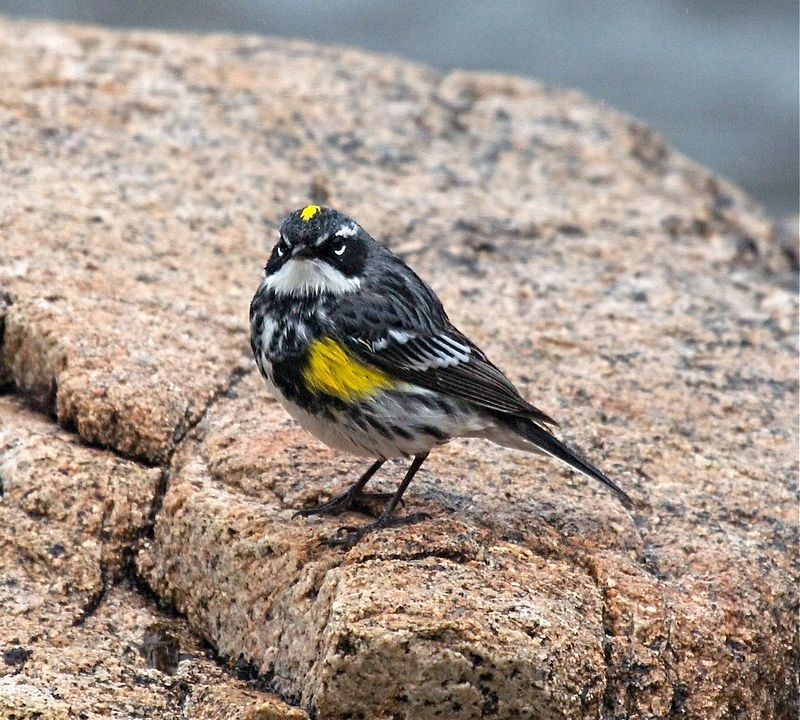
The Yellow-rumped Warbler, affectionately known as ‘Butterbutt,’ is a dynamic presence in Acadia. Its bright yellow rump and contrasting gray and white body make it easily recognizable as it flits through the trees.
These warblers are highly adaptable, feeding on insects and fruit, and are often seen in mixed flocks. Their cheerful, buzzing song adds a lively element to the park’s diverse soundscape.
During migration, they travel vast distances, a testament to their endurance and the interconnected ecosystems of Acadia.
Tree Swallow
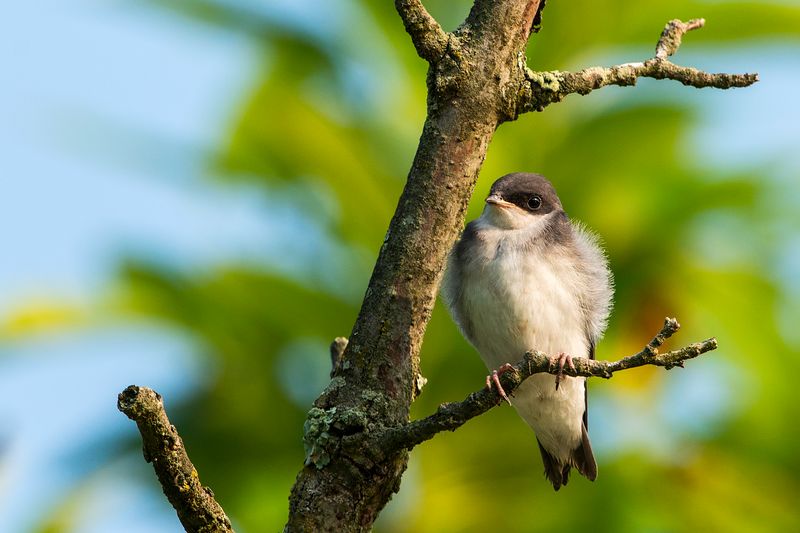
A master of the skies, the Tree Swallow captivates observers with its aerial feats in Acadia. Its iridescent blue and white feathers shimmer as it darts and swoops in pursuit of insects.
These social birds are often seen near water bodies, where they nest in cavities or man-made boxes. Their agile flight and cheerful chirping contribute to the lively atmosphere of the park.
As migratory birds, they cover great distances, reflecting the resilience and adaptability inherent in Acadia’s vibrant avian community.
Atlantic Puffin
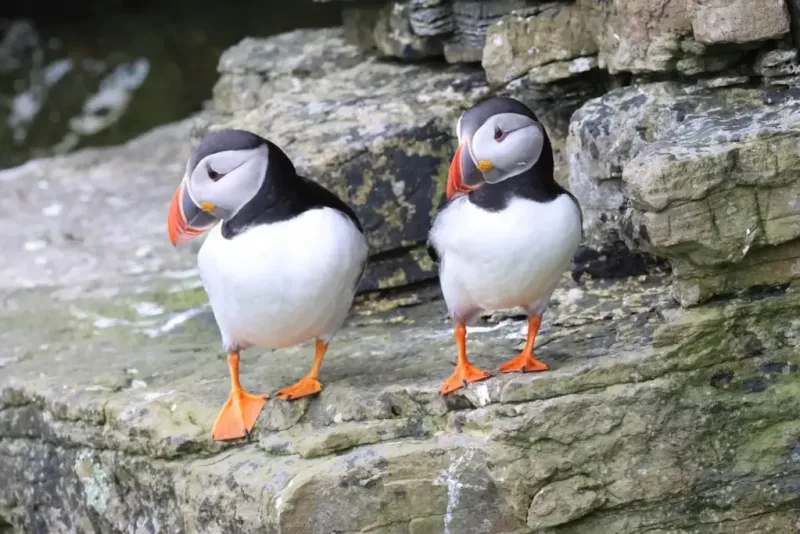
With its vibrant orange beak and striking black and white plumage, the Atlantic Puffin is a delightful sight along the rocky shores of Acadia. Known as the “clowns of the sea,” these birds captivate with their playful antics and distinctive appearance.
During the summer months, puffins can be seen nesting on the park’s coastal cliffs, providing a rare spectacle for visitors. Their unique waddling walk and effortless swimming abilities add to their charm.
Did you know? Despite their comical look, puffins are expert divers, reaching depths of up to 60 meters to hunt fish.

